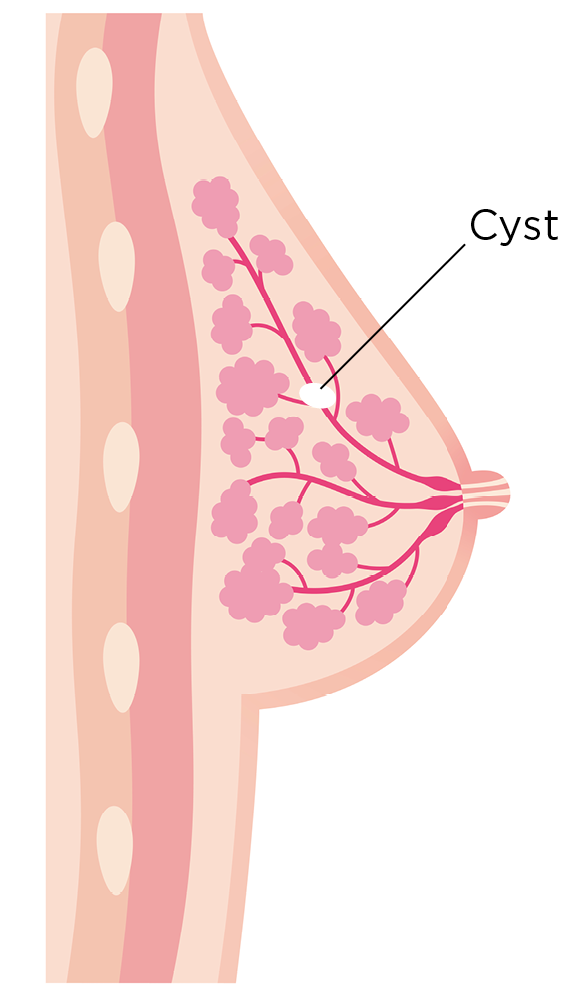What is a Breast Cyst?
Breast cysts are benign (not cancer). They are one of the most common causes of a breast lump and can develop in one or both breasts.
Breast tissue contains lobes of glandular tissue that are divided into smaller lobules that produce milk during pregnancy and breast-feeding. Breast cysts develop when there is an accumulation of fluid inside these glands.
 Symptoms of a Breast Cyst
Symptoms of a Breast Cyst
Sometimes a breast cyst can be felt. It may feel smooth, round like a grape and have borders distinct from surrounding breast tissue. Cysts are often tender and increase in size just before your menstrual cycle and then decrease after your cycle.
What causes Breast Cysts?
It is believed that they develop as the breast changes with age due to changes in the hormonal cycle. Breasts cysts are common in women before menopause, between ages 35 and 50, but can occur in women of any age.
Diagnosis of Cysts
If you have any changes or concerns about a change in your breasts your doctor will want to do a breast exam. A breast exam won’t determine if a breast lump is a cyst so your doctor may order some additional testing such as a diagnostic mammogram and/or breast ultrasound.
A breast ultrasound can help determine if a breast lump is solid or fluid filled. A breast cyst is fluid filled while a solid appearing mass is still most likely benign but may require further testing.
Treatment of A Breast Cyst
Breast cysts do not require treatment unless they are symptomatic. It may be more difficult to find new breast lumps or other changes if you have breast cysts. If they are painful or uncomfortable a cyst may be aspirated (drained) to relieve the symptoms
Having breast cysts does not increase your risk of breast cancer and will not become cancer.
All women should have routine mammography after age 40 and report any new breast lumps or changes to their provider.